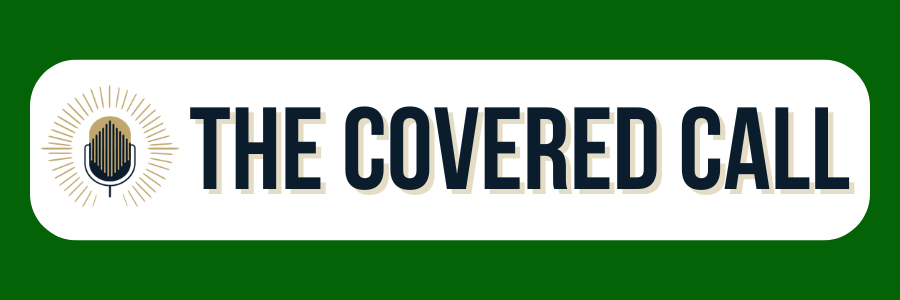Breaking Down Strategic Planning Barriers
Planning for the future often feels murky and complex. You know where you want your organization to go, but the exact steps there remain unclear. Most companies find it challenging to move from big ideas to specific actions that drive real change.
Common Planning Roadblocks to Watch For
Several key issues frequently derail strategic planning efforts. Poor communication between teams, incomplete data for decision making, and a gap between high-level plans and daily work can all create friction. Teams may also face resistance to new approaches, worry about potential failures, or struggle to get everyone aligned and committed. Addressing these challenges directly helps create plans that resonate across the organization.
Building a Clear Direction Forward
A solid strategic plan starts with a well-defined vision that guides everyone toward shared goals. When teams understand exactly where they're heading and why it matters, they're more motivated to help make it happen. Rather than vague objectives like "grow revenue," outline specific targets and explain how reaching them will benefit both the company and its people.
The gap between goals and results remains a major challenge - only 2% of leaders feel confident they'll hit 80-100% of their strategic targets. This highlights why having concrete, achievable goals and detailed execution plans is so critical. Learn more about strategic planning success rates in this ClearPoint Strategy report on planning statistics.
Building and Keeping Momentum
To maintain energy throughout the planning process, break down big strategies into smaller wins you can track and celebrate along the way. Like climbing a mountain, reaching each milestone provides motivation for the next phase. This creates ongoing progress while keeping teams focused on larger objectives.
Making Plans Actionable
Converting broad strategies into real-world progress requires clear structure. Assign specific responsibilities, create realistic timelines, and ensure teams have the resources they need. Build in regular checkpoints to measure results and adjust plans based on what's working. This keeps initiatives moving forward while allowing flexibility as conditions change.
Mastering the Core Planning Steps

Creating a successful business requires methodical planning and focused execution. Understanding each step of strategic planning is key to turning goals into reality. Let's explore how leading organizations adapt these proven steps for their unique needs, helping you move from ideas to real-world results while avoiding common missteps.
Defining Your Vision and Mission
Start by creating a clear picture of where you want to go. Your vision statement should serve as your guiding light for all decisions. The mission statement explains your purpose and method for achieving that vision. For example, a financial podcast might define its mission as "sharing practical advice and real success stories to help people build lasting wealth through smart investing."
Assessing Your Current State
After setting your direction, take an honest look at where you stand today. Examine your organization's internal capabilities and market position through detailed analysis. This gives you a solid starting point and helps identify your best opportunities for growth while spotting potential risks early.
Establishing Objectives and Priorities
With a clear view of your starting point and destination, set specific, measurable goals. Use the SMART framework (Specific, Measurable, Achievable, Relevant, Time-bound) to create focused objectives. Rank these goals by impact to ensure you tackle the most important tasks first. Strategic planning combines several key elements - learn more about the process here.
Defining Tactics and Responsibilities
Break down each objective into concrete action steps. Think of this like constructing a building - you need detailed blueprints and clear roles for every worker. Assign specific owners to each task to create accountability and ensure nothing falls through the cracks.
Managing and Evaluating Results
Progress tracking should be ongoing and data-driven. Monitor key metrics, adjust course when needed, and celebrate wins along the way. For podcasts, this means watching download numbers, engagement rates, and website traffic. Use this data to make smart choices about content and marketing.
Strategic Planning Process Steps Framework
Below is a detailed breakdown of the planning process with specific activities and timelines for each phase:
| Planning Step | Key Activities | Expected Outcomes | Timeline |
|---|---|---|---|
| Define Vision & Mission | Brainstorming, stakeholder interviews, market research | Clear vision and mission statements | 1-2 weeks |
| Assess Current State | SWOT analysis, competitor analysis, internal reviews | Understanding of strengths, weaknesses, opportunities, and threats | 2-4 weeks |
| Establish Objectives & Priorities | Setting SMART goals, ranking priorities | Clearly defined and prioritized objectives | 1-2 weeks |
| Define Tactics & Responsibilities | Developing action plans, assigning roles and responsibilities | Detailed action plan with assigned ownership | 2-4 weeks |
| Manage & Evaluate Results | Performance monitoring, data analysis, reporting, strategy adjustments | Continuous improvement and adaptation to changing conditions | Ongoing |
By following these core planning steps consistently, you'll be better positioned to reach your goals. Take inspiration from successful business leaders featured on The Covered Call podcast who have used strategic planning to achieve meaningful results. Their experiences show how methodical planning leads to real success.
Creating Realistic Strategic Timelines

A great strategic plan needs more than just clear goals - it requires a realistic timeline that guides your team through each phase. Building effective timelines means finding the right balance between pushing forward and staying grounded. Let's explore proven ways to create timelines that energize your team and keep your strategic planning on target.
Balancing Quick Wins with Long-Term Vision
The most effective timelines include both short-term achievements and long-term objectives. Those early wins, which teams can reach within 3-6 months, build confidence and keep everyone moving forward. Take The Covered Call Podcast - they might target a 15% boost in social media engagement this quarter while working toward their bigger goal of 50% audience growth over the next year. This combination helps maintain energy and progress.
Establishing Meaningful Milestones
Think of milestones as checkpoints on your strategic journey - they let you measure progress and adjust course when needed. Each milestone should connect to specific, measurable results, like launching a new show segment or bringing on a major sponsor. Clear milestones make it easier to track your progress and keep everyone aligned on what success looks like.
Adapting Timelines While Maintaining Focus
While structure matters, being able to adjust is just as important. Markets shift, unexpected hurdles appear, and new possibilities emerge. The key is staying flexible without losing sight of your main objectives. Regular team check-ins help ensure everyone understands both the changes and the consistent strategic direction.
Practical Frameworks for Staying on Track
To keep your strategic planning moving, you need solid routines. Block out dedicated time for strategic work, just like you would for key meetings. Schedule regular progress reviews to discuss wins, challenges, and needed changes. Most experts suggest completing the entire strategic planning process within 90 days to avoid burnout and keep plans fresh. Learn more about effective planning at OnStrategyHQ. By combining clear goals, realistic timelines, and smart flexibility, teams dramatically improve their chances of long-term success.
Building Unshakeable Team Alignment

Building a thriving team starts with everyone moving in sync. The best strategic planning happens when the entire organization shares common goals and understands the path forward. Let's explore proven ways to create this essential team alignment.
Creating Real Collaboration
True team alignment starts when people feel safe sharing their thoughts openly. For example, The Covered Call Podcast team holds weekly brainstorming meetings where everyone from producers to marketing contributes ideas for future episodes and growth plans. This helps each person feel invested in the team's success.
Removing Department Barriers
Too often, departments work in isolation which hurts execution. The solution is building cross-functional teams that bring together people from different areas to tackle shared goals. This improves communication naturally and creates mutual accountability.
Making Goals Personal
People engage more when they see how their work connects to bigger objectives. Clear communication about the strategic plan, its purpose, and expected results is essential. Giving team members chances to help shape and refine plans deepens their sense of ownership.
Keeping Communication Flowing
Regular, open dialogue keeps strategic planning on track. This means having clear channels for updates, progress reports, and team feedback. Regular meetings, email updates, and online discussion spaces all help maintain transparency. Research shows that 86% of leadership teams spend under one hour per month discussing strategy, while 95% of employees don't understand their company's strategy. Find more insights here.
Getting Honest Feedback
Creating better plans requires listening to input from all levels. Build a culture where people feel comfortable sharing feedback. Use surveys, focus groups and one-on-one discussions to identify potential issues, improve strategies, and keep plans aligned with evolving needs.
Making Roles Crystal Clear
Everyone needs to understand their part in achieving strategic goals. Define clear roles, responsibilities and key metrics. When people know exactly what's expected, they can own their work and contribute effectively to the shared vision. For The Covered Call Podcast, this means coordinating content creation and marketing to reach growth targets and expand their audience.
Leveraging Strategic Planning Tools
Strategic planning requires the right tools and frameworks to succeed. Having effective tools can make planning more efficient and help you better understand your market position. Let's explore how to select and use planning tools that match your organization's specific needs.
Choosing the Right Tools for Your Needs
Start by identifying tools that support each phase of your planning process. For The Covered Call Podcast, this could mean using Asana or similar project management software to track content creation and marketing tasks, along with analytics tools to monitor key metrics like downloads and audience demographics. The right combination of tools creates a more effective planning system.
Classic Frameworks and Digital Solutions
SWOT analysis remains one of the most useful frameworks for understanding your current position. It helps identify internal strengths/weaknesses and external opportunities/threats. For The Covered Call, a SWOT might reveal expertise as a strength, limited marketing as a weakness, partnership potential as an opportunity, and increasing competition as a threat.
Modern tools like Notion and Trello make planning more collaborative and organized. These platforms help teams communicate better, organize workflows, and keep all planning materials in one place.
Making Tools Work Together
The real power comes from connecting your tools into one system. Link your project management platform to your analytics dashboard to see how specific tasks impact key metrics. This gives you clear insights into which strategies are working best.
Common Implementation Mistakes
When adding new tools, be clear about what you need them to accomplish. Don't choose tools just because they're popular - pick ones that fit your specific planning process. Make sure your team gets proper training and ongoing support to use the tools effectively.
Tracking Tool Performance
Check regularly if your planning tools are delivering value. Monitor whether they help you hit goals, save time, and provide useful data. Get feedback from your team and be ready to make changes. Regular evaluation keeps your toolkit relevant and productive.
Let's compare some popular strategic planning tools:
Strategic Planning Tools Comparison
| Tool Name | Best For | Key Benefits | Limitations |
|---|---|---|---|
| SWOT Analysis | Initial strategy development | Clear view of position and opportunities | Subjective and needs honest assessment |
| Project Management Tools | Task and timeline tracking | Better team coordination and accountability | Learning curve and ongoing maintenance |
| Analytics Dashboards | Performance monitoring | Data-based decision making | Requires good data quality |
| Team Workspaces | Communication and file sharing | Central information hub and transparency | Need clear organization |
The right strategic planning tools can transform planning from a complex task into a clear path forward. Choose tools thoughtfully, connect them effectively, and stay flexible to get the most value from your planning process.
Tracking and Evolving Your Strategy

Strategic planning requires ongoing attention and adjustment. Like steering a ship, you need to stay alert to changing conditions and make smart corrections to stay on course. For example, if The Covered Call Podcast started with expert investor interviews but noticed growing interest in newer entrepreneurs, that feedback would signal an opportunity to expand content in a new direction.
Setting Up Your Measurement System
Just as markets shift daily, your business environment changes constantly. Build a measurement system focused on key metrics that matter. For podcasts, this means tracking:
- Download numbers
- Website traffic
- Social media engagement
- Listener reviews and comments
- Survey responses
These data points reveal how well your content connects with listeners. The numbers tell part of the story, while feedback provides crucial context about what resonates with your audience.
Spotting Changes Early and Adjusting Course
Good measurement helps you notice shifts before they become problems. If The Covered Call Podcast sees downloads drop for certain topics, that's a clear signal to examine that content. Maybe the subject no longer interests listeners, or perhaps the presentation needs a fresh approach. Quick responses to these signals help keep your strategy current.
Balancing Change and Consistency
Making changes while maintaining focus requires careful balance. Think of it as sailing - you adjust to wind and waves while keeping your destination in view. For The Covered Call Podcast, this means finding new ways to teach financial freedom while staying true to its core mission. Share strategy updates openly with your team so everyone understands and supports the adjustments.
Making Major Strategy Updates
Sometimes small tweaks aren't enough - you need bigger changes. Start by studying your metrics and feedback to find the real issues. For The Covered Call Podcast, this could mean:
- Analyzing multi-month trends in downloads
- Reviewing all listener comments
- Studying what competitors offer
- Checking if format and topics still work
Use these insights to craft updated strategies that align with your goals. Changes might include new content focus areas, format updates, or expanded marketing.
Join Jason Nutter and Lovis Kauf on The Covered Call Podcast for stories and practical advice from guests who've found their path to personal and financial independence.

